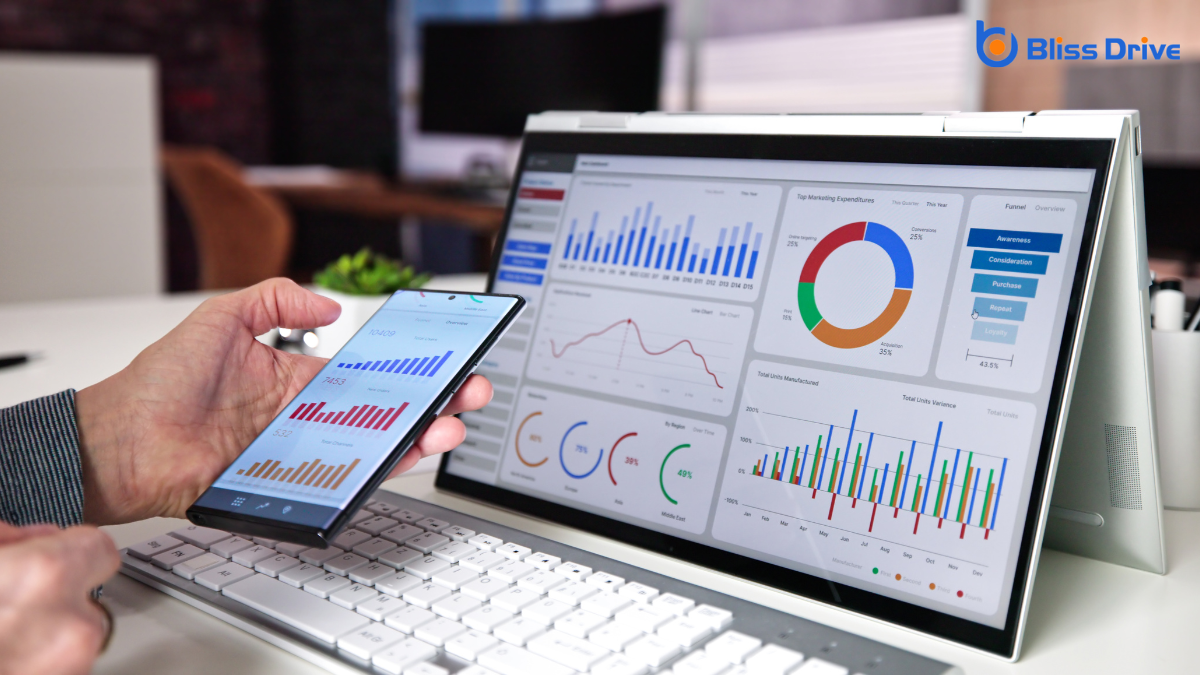Digital Marketing Services
Learn More About Us

To effectively benchmark your content performanceMeasuring how well content achieves its intended goals. in SEO, you'll want to focus on key performance indicators like organic trafficVisitors who come to a website through unpaid search engine results., bounce rateThe percentage of visitors who leave a website after viewing only one page., and conversionThe completion of a desired action by a referred user, such as making a purchase or filling out a fo... rates. Using tools such as Google AnalyticsA web analytics service offered by Google that tracks and reports website traffic. and SEMrush can provide insights into user engagementThe level of interaction and involvement users have with social media content. and behavior on your site. By analyzing these metrics, you can identify trends and areas for improvement, but there's more to evaluate when optimizing your strategy to stay competitive.
When evaluating the effectiveness of your content, how do you determine its success? You focus on key performance indicators (KPIs) that align with your goals.
EngagementThe interactions that users have with a brand’s content on social media. metrics, like page views and time on page, tell you if readers find your content valuable. Conversion rates reveal if visitors take desired actions, such as signing up for newsletters or making purchases.
Organic traffic indicates how well your content ranks in search results, highlighting SEO success. Bounce rate helps you assess if readers stay engaged or leave quickly.
Social shares and comments measure how your audience interacts with your content. By understanding these KPIs, you’ll grasp which areas need improvement and which strategies are working, guiding future content creation decisions effectively.

Several powerful analytics toolsSoftware used to track and analyze website performance, user behavior, and marketing efforts. can provide the insights you need for accurate measurement of your content's performance. When diving into SEO, it's essential to know which tools can best serve your needs.
Each tool offers unique features that help you understand how well your content is doing in search results, traffic, and more.
These tools allow you to measure your content's reach and effectiveness, empowering you to make data-driven decisions for improvement.
In addition to using analytics tools to measure content performance, understanding audience engagement metrics is key to refining your SEO strategy.
Begin by focusing on metrics like time on page, bounce rate, and pages per session. These insights highlight how visitors interact with your content and whether it meets their needs. A high bounce rate might indicate your content isn’t relevant or engaging, while a low time on page could suggest a lack of depth.
Engagement metrics help you identify areas for improvement. If users quickly exit your page, consider optimizing your content’s structure or adding multimedia elements to boost engagement.
Regularly analyze these metrics to guarantee your content resonates with your audience, driving better SEO results and fostering a more engaged visitor base.
While analyzing engagement metrics offers valuable insights, evaluating conversion rates and lead generationThe process of attracting and converting prospects into potential customers. is essential for understanding your content's true impact on business goals.
These metrics show how well your content converts visitors into leads or customers. To assess these, focus on:

Understanding how your content stacks up against competitors' is essential for refining your SEO strategy. By analyzing their content performance, you gain insights into what works in your industry.
Start by identifying key competitors and their top-performing pages using tools like SEMrush or Ahrefs. Look at metrics such as keyword rankings, backlinksLinks from other websites pointing to your website, crucial for SEO., and social shares.
Examine their content structure, tone, and engagement tactics. Are they using more visuals, or do they've in-depth articles? Notice the kind of calls-to-action they employ.
This helps you identify gaps in your own content and potential opportunities. Don’t just copy; adapt their successful strategies to fit your brand’s voice and goals.
Keep a close eye on changes in their content approach to stay competitive.
To continuously improve your SEO contentContent optimized for search engines to improve visibility and rankings., start by analyzing performance metrics to see what's working and what's not.
Use these insights to optimize your content strategies, ensuring they align with your goals.
Performance metrics are your compass in the ever-evolving landscape of SEO. They guide you to understand what’s working and what’s not.
To get the most out of your content, you need to analyze these metrics regularly. Focus on the numbers that truly matter, as they offerThe specific product or service being promoted by affiliates. insights essential for informed decisions.
Start by looking at:
While the digital landscape is constantly shifting, optimizing your content strategies guarantees you stay ahead of the curve.
Begin by analyzing your current content's performance metrics. Identify what works and what doesn’t. Use these insights to refine your approach. Are your keywords effective? Is your content resonating with your audience? Ascertain your content is aligned with your audience's needs and preferences.
Regularly update your material to reflect current trends and search engine algorithms. A/B testingA method of comparing two versions of a web page or app against each other to determine which one pe... different versions can highlight what engages your audience best.
Don't forget to monitor competitors’ strategies for inspiration. Incorporate their successful tactics while maintaining your unique voice.
Continuous improvement is key. Keep iterating, learning, and adjusting to maximize your content's impact and visibility.
To effectively benchmark your content's SEO performance, focus on key performance indicators like organic traffic, bounce rate, and conversion rates. Use tools like Google Analytics and SEMrush to track these metrics and gain insights into user behavior. Regularly assess time on page and pages per session to guarantee content relevance. Don’t forget to compare your metrics with competitors to spot improvement areas. By continuously refining your strategy, you'll keep your content competitive and impactful.
